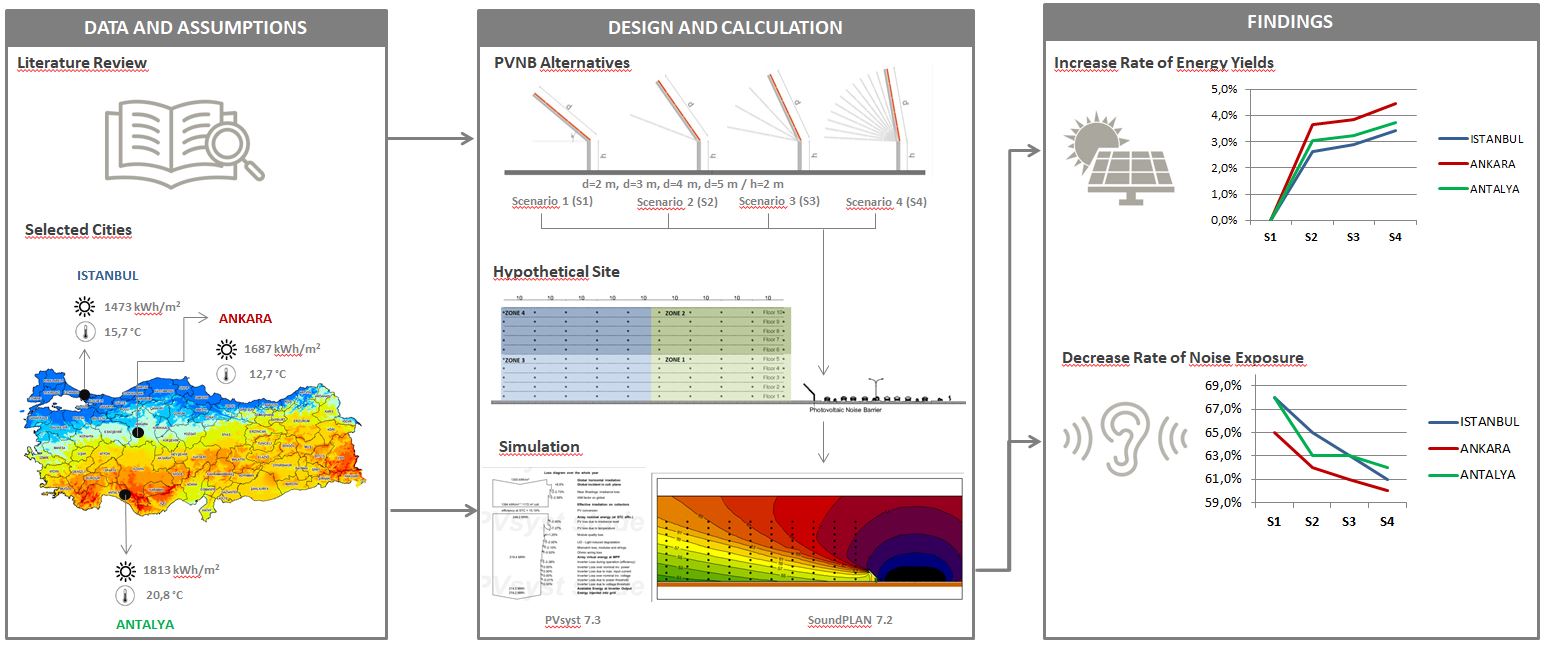DR. ÖĞR. ÜYESİ FERHAN HASMADEN’İN SCIE MAKALESİ YAYINLANDI
Mimarlık ve Tasarım Fakültesi İç Mimarlık ve Çevre Tasarımı Bölümü Dr. Öğr. Üyesi Ferhan HASMADEN’in “Performance evaluation of fixed and single-axis sun tracker photovoltaic noise barrier: a case study for Turkey” başlıklı makalesi SCIE’de yer alan Q2 dergilerden International Journal of Environmental Science and Technology dergisinde yayınlandı.
Makale için tıklayınız.
Özet
Photovoltaic Noise Barriers combine strategies for reducing noise and using renewable energy so that roadsides with low-value lands gain effective functions. The relatively low power density of photovoltaic systems and the projection of increasing pressure on urban lands necessitate further studies to maximize solar panel insolation. The dynamic photovoltaic noise barrier system integrated with solar tracking systems can be an efficient solution to maximize energy extraction from solar panels. This paper focuses on the effect of dynamic photovoltaic noise barrier systems on solar energy and noise control efficiency with different scenarios based on fixed and single-axis tracking technology. Annual optimal fixed tilt of the three cities with different solar characteristics were modeled in the base case scenario (S1), and the tilt angles of six-month, seasonal, and monthly periods were modeled in the S2, S3 and S4 scenarios, respectively. The solar output of alternatives was calculated via PVsyst, and noise control performance was analyzed with SoundPLAN. Energy production and noise control performance are improved by shorter tracking periods and also at locations with high clearness index and low average temperature. Systems adjusted to the S4 scenario maximize both energy and noise control performance, as shown by the results. Ankara showed the highest power production increase compared to S1, with percentages of 3.65%, 3.86%, and 4.46% for the S2, S3, and S4 scenarios, respectively. The maximum noise control performance was observed in Ankara and the rate of exposed receiver points decreased from 88 to 70.1% with the S4 scenario compared to S1.
Grafik Özet


